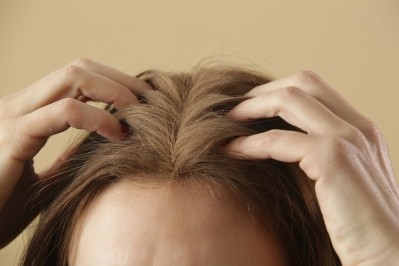Q&A: Attorney breaks down ‘Clean at Sephora’ ruling

In recent years, the beauty industry has witnessed a significant shift towards transparency and cleaner formulations. Sephora, one of the world's leading beauty retailers, has been at the forefront of this movement with its Clean at Sephora initiative. Designed to offer customers greater clarity and choice, this program aims to highlight products that are free from certain ingredients perceived as potentially harmful or controversial.
However, like any major industry change, the Clean at Sephora initiative has sparked debate and raised questions among consumers, brands, and experts alike. To shed light on the implications of the recent court ruling regarding the legality of this initiative, we spoke to attorney Kelly Bonner of Duane Morris, LLP as she explores the program’s legal complexities and controversies.
CDU: Can you provide an overview of the Clean at Sephora class action complaint, including the plaintiff’s allegations, the defendant’s response, and the judge’s final ruling?
Kelly Bonner (KB): In November 2022, Plaintiff Lindsay Finster filed a proposed class action lawsuit in New York federal court, alleging that cosmetics advertised as part of the “Clean at Sephora” program contained ingredients that were “inconsistent with how consumers understand” the term “clean”. Finster claimed that consumers understood the term “clean” to mean “made without synthetic chemicals and ingredients that could harm the body, skin or environment.”
But because several products with the "Clean at Sephora" [seal] contained synthetic ingredients, she argued that the “Clean at Sephora” program “misled consumers into believing that the products being sold are ‘natural’,” and into paying a price premium based on this misunderstanding.”
The retailer responded by filing a motion to dismiss the complaint, arguing that it was not plausible that a reasonable consumer would or could be confused by the “Clean at Sephora” program into believing that the products contained only all natural ingredients. The retailer didn’t use all-natural marketing or make representations about the ingredients included in the program, rather than what ingredients were excluded from the program.
On March 15, 2024, Judge David N. Hurd dismissed the complaint, reasoning that plaintiff “failed to plausibly allege that Sephora misled reasonable consumers when it marketed and sold its 'Clean at Sephora' cosmetics,” or that Sephora "made any explicit or implied promises that its ‘Clean at Sephora’ cosmetics were all-natural and free of any potentially harmful ingredients.”
CDU: What is the potential impact of the ruling on cosmetics and personal care product manufacturers and suppliers in the US?
KB: Given Finster’s emphasis on the delta between what the retailer expressly communicated versus what the consumer perceived, it remains to be seen what, if any impact, the decision will have on the bigger debate over the meaning of clean beauty.
Nevertheless, the decision serves as a reminder that there are competing understandings of clean beauty in today’s cosmetics industry, and that it is important for brands to be transparent and consistent about how they are applying the term.
CDU: How does this case compare to other ‘clean beauty’ cases that have been brought forth in US courts so far?
KB: I think this case is fairly consistent with other “clean beauty” cases we’ve seen since 2022, in that plaintiffs allege that "clean" or "natural" labeling is misleading because the products contain synthetic ingredients, and that the labeling induced plaintiffs to pay a price premium on products they wouldn’t have otherwise purchased. They’re alleging primarily economic harm rather than physical injury.
CDU: Do you think this case emphasizes the need for the beauty industry to provide consumers with a universal definition of ‘clean beauty’ products? Why or why not?
KB: Given the way “clean beauty” evolved over time, I think it will be hard for industry to adopt any one meaning—clean beauty means different things to different retailers and different people. And although MoCRA significantly altered the way the federal government regulates cosmetics in the United States, it didn’t alter the existing regulatory framework for cosmetic labeling and marketing issues, or define terms like “clean.”
It’s possible the FTC’s forthcoming updates to the Green Guides may offer greater interpretative guidance. However, until then, I think this case, and others like it, emphasize the need for brands to be transparent and consistent with consumers about how they’re using the term “clean,” given the possibility that consumers will interpret it to mean different things.
CDU: With the ruling now in place, is it likely that other cases of a similar nature will continue to be filed in other jurisdictions?
KB: I think it’s likely we’ll continue to see these kinds of claims. I think, from a litigation perspective, we’ve seen plaintiffs increasingly focus on beauty ingredients and possible contaminants, and whether beauty products are truly “safe.” Given this scrutiny, and evolving claims concerning ingredient safety, I think we can expect to see plaintiffs continuing to question whether products should be marketed as “clean” if they are found to contain certain ingredients.










![Skinidea has developed a new skin care brand, MDP, specifically to target US beauty consumers. [Medipeel]](/var/wrbm_gb_food_pharma/storage/images/_aliases/wrbm_tiny/publications/cosmetics/cosmeticsdesign-asia.com/headlines/business-financial/skinidea-develops-new-brand-to-target-us-market-as-part-of-expansion-plans/17362677-1-eng-GB/Skinidea-develops-new-brand-to-target-US-market-as-part-of-expansion-plans.jpg)





